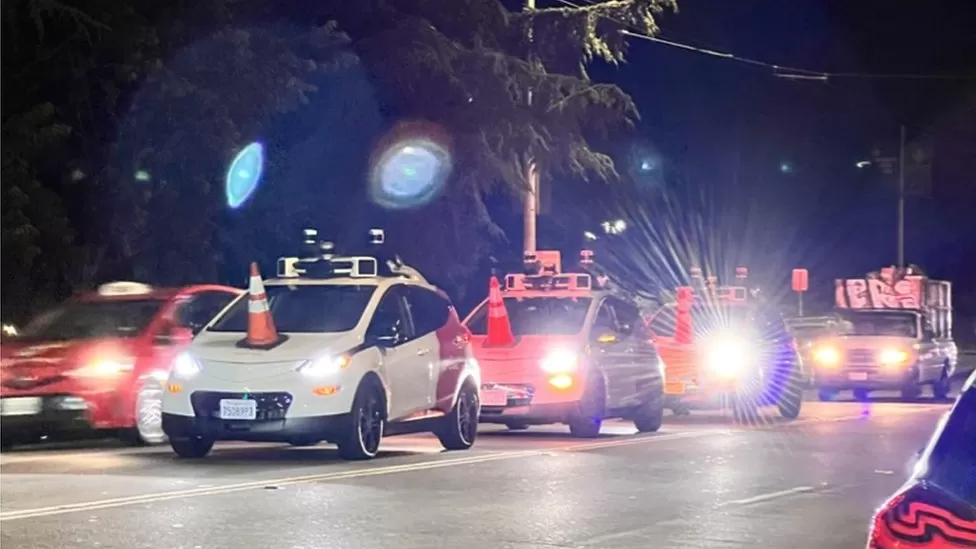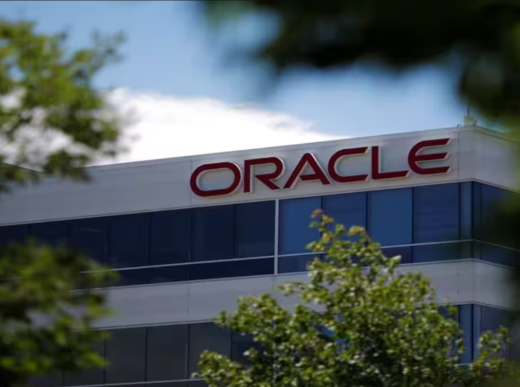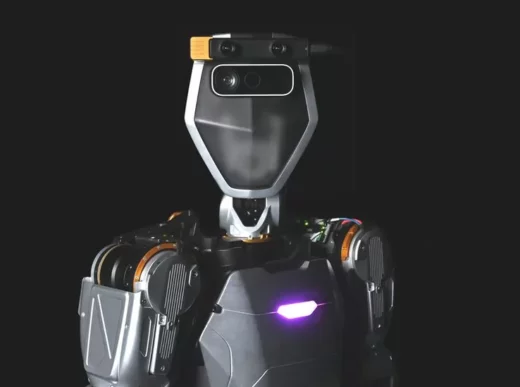The cab pulls up, and a sense of anticipation grips me. It’s an unusual scene—one I never thought I’d witness in my lifetime. This cab, however, is unlike any other. There’s no driver in sight. As it halts in front of me, a notification prompts me to unlock the door with my phone, and I’m invited into a ride devoid of human presence.
Just as I’m about to step in, a passerby intervenes. He voices his apprehensions, cautioning me about the dangers of these robotaxis. According to him, he witnessed a near-miss incident where someone narrowly escaped being run over by one of these autonomous vehicles. His message is clear: the arrival of robotaxis is sparking divisions in San Francisco, with some believing that the city has embraced a hazardous experiment that jeopardizes lives.
A faction in San Francisco vehemently opposes the introduction of robotaxis, viewing it as a reckless experiment that poses risks to public safety. Adding to the controversy, a campaign group called Safe Street Rebel has taken matters into its own hands by placing cones on the hoods of robotaxis, effectively disabling them. Videos of these acts have gone viral, igniting a larger discourse.
However, city authorities remain committed to allowing these autonomous vehicles to operate on their streets, sparking a clash between opposing viewpoints. This tug-of-war highlights the complex landscape surrounding the deployment of robotaxis in a city that is at once a hub of innovation and a battleground for concerns over safety and livelihoods.
The Decision that Shaped the Divide
On August 10, 2023, the California Public Utilities Commission (CPUC) made a pivotal decision, permitting two cab companies—Waymo and Cruise—to offer 24-hour services using robotaxis. Prior to this ruling, these companies were restricted to operating only during the night. However, the path to this decision was paved with six hours of public commentary, as citizens voiced a spectrum of hopes and apprehensions.
Among those voicing concerns were Uber and Lyft drivers, worried that the rise of robotaxis could spell the end of their livelihoods. Concerns extended beyond employment, as representatives from sectors such as garbage disposal and emergency services pointed out operational challenges posed by these autonomous vehicles.
Some skeptics argue that the technology hasn’t yet proven its safety, suggesting that embracing robotaxis prematurely could endanger San Francisco residents. Others raised questions about inclusivity, particularly for individuals with physical disabilities who rely on drivers’ assistance. Amidst these doubts, there were also supporters who believe that robotaxis offer safer and more predictable transportation.
A Glimpse into the Dueling Perspectives
The divide presents itself starkly through personal stories. On one side, George Janku, an orthopedic surgeon and cyclist, attests to his trust in the predictability of robotaxis compared to human-driven vehicles prone to aggressive or distracted behaviors. Jessie Wolinsky, who is visually impaired, finds safety and respect in robotaxis that she didn’t experience with Uber or Lyft drivers.
Yet, concerns persist. A mother recounts being turned away by taxi drivers due to her children’s car seats, a problem she believes driverless cars would not pose. This juxtaposition of anecdotes underscores the complex intersection of personal experiences and perceptions that fuel the divide.
Personally, I’ve witnessed both sides of the argument. I’ve used Cruise’s robotaxis, appreciating their reliability, but I’ve also experienced a breakdown that inconvenienced other drivers. Moreover, just days after the CPUC decision, a Cruise robotaxi was involved in an accident with a fire engine, raising further questions about safety.
The Battle over Safety and Progress
The debate revolves around the safety of robotaxis, with both Waymo and Cruise asserting their safety records. Waymo underscores its two million miles of autonomous driving without pedestrian or cyclist accidents. Cruise echoes this sentiment, having covered three million driverless miles with a strong safety record.
However, skepticism lingers among San Franciscans. The emergence of the Safe Street Rebel group, which uses unconventional tactics to protest artificial intelligence, reflects the depth of concerns that some believe are being ignored. The group’s actions and sentiments echo historic episodes where technological shifts met opposition. The parallels with the Luddites of the 19th century, who resisted technological change, are striking.
San Francisco stands at a crossroads, torn between its desire to lead in innovation and the need to address public concerns. While car companies stand by the safety of their vehicles, the key challenge lies in convincing San Franciscans of this fact. As the city grapples with these complex dynamics, it’s evident that the debate over robotaxis is more than a technological tussle—it’s a reflection of a city’s aspirations, anxieties, and its journey towards embracing the future.















